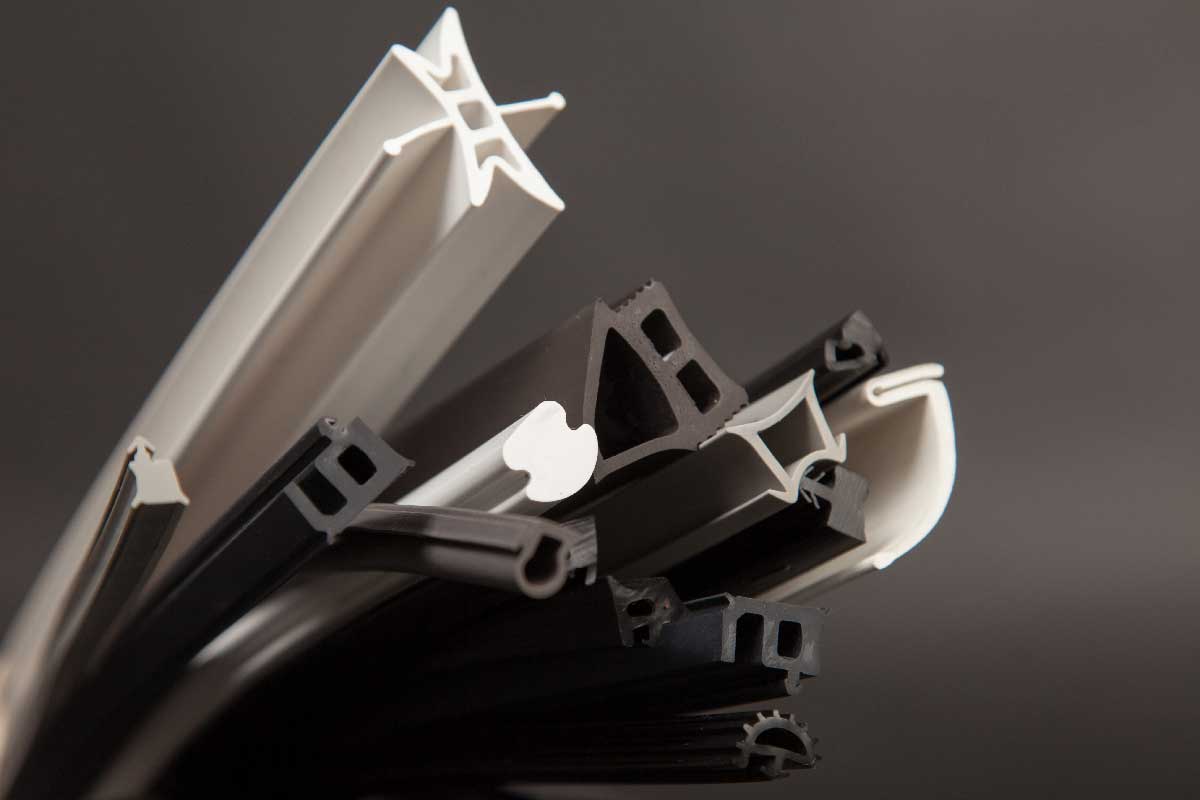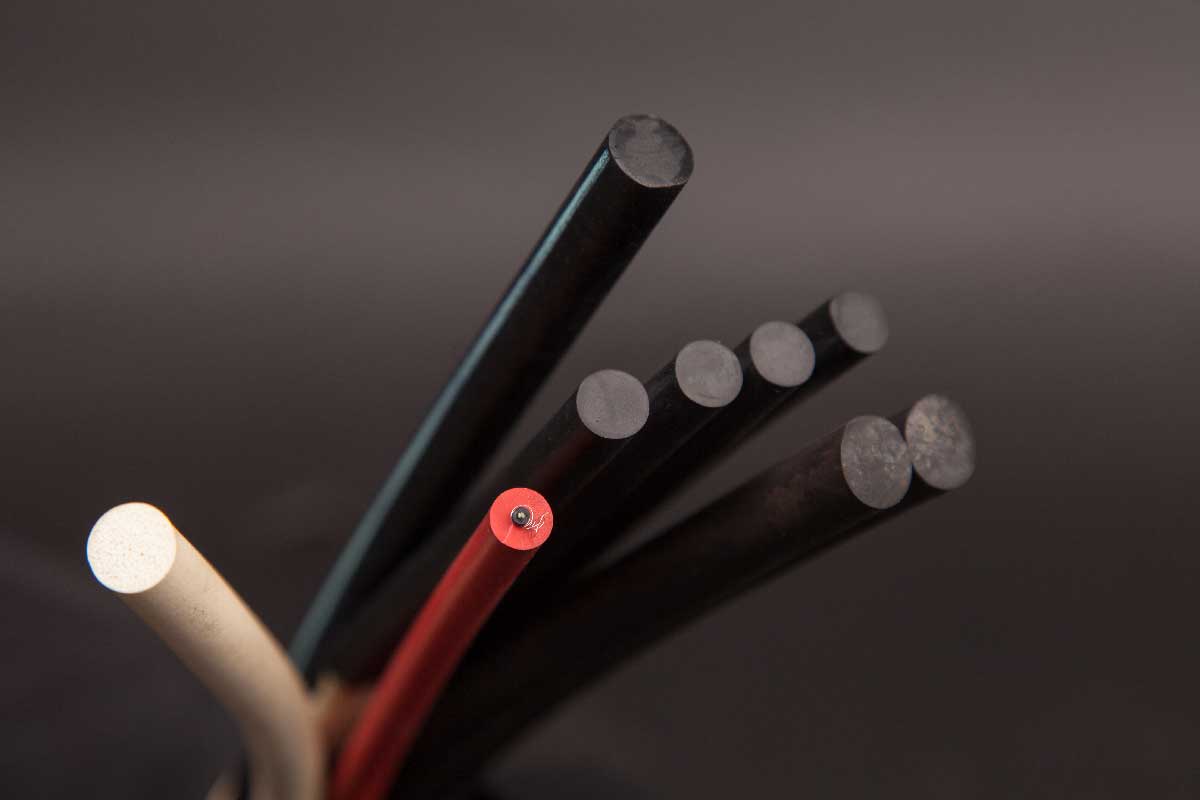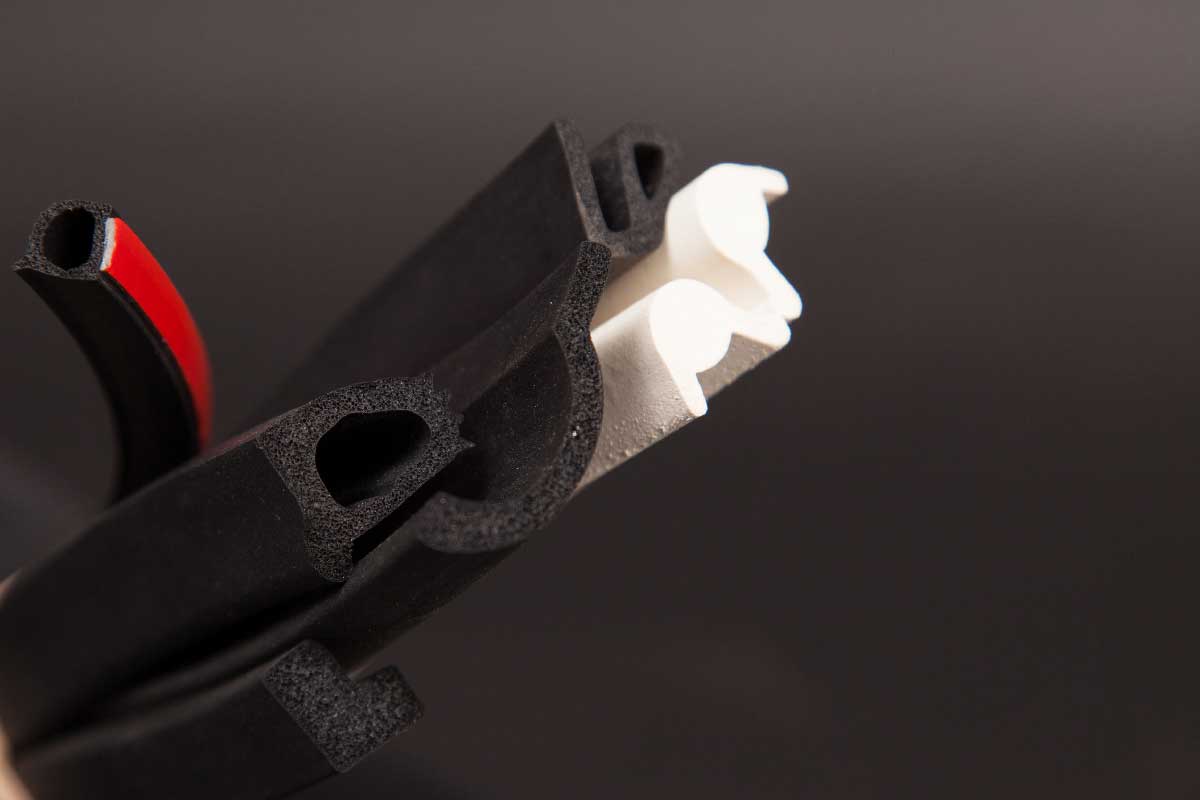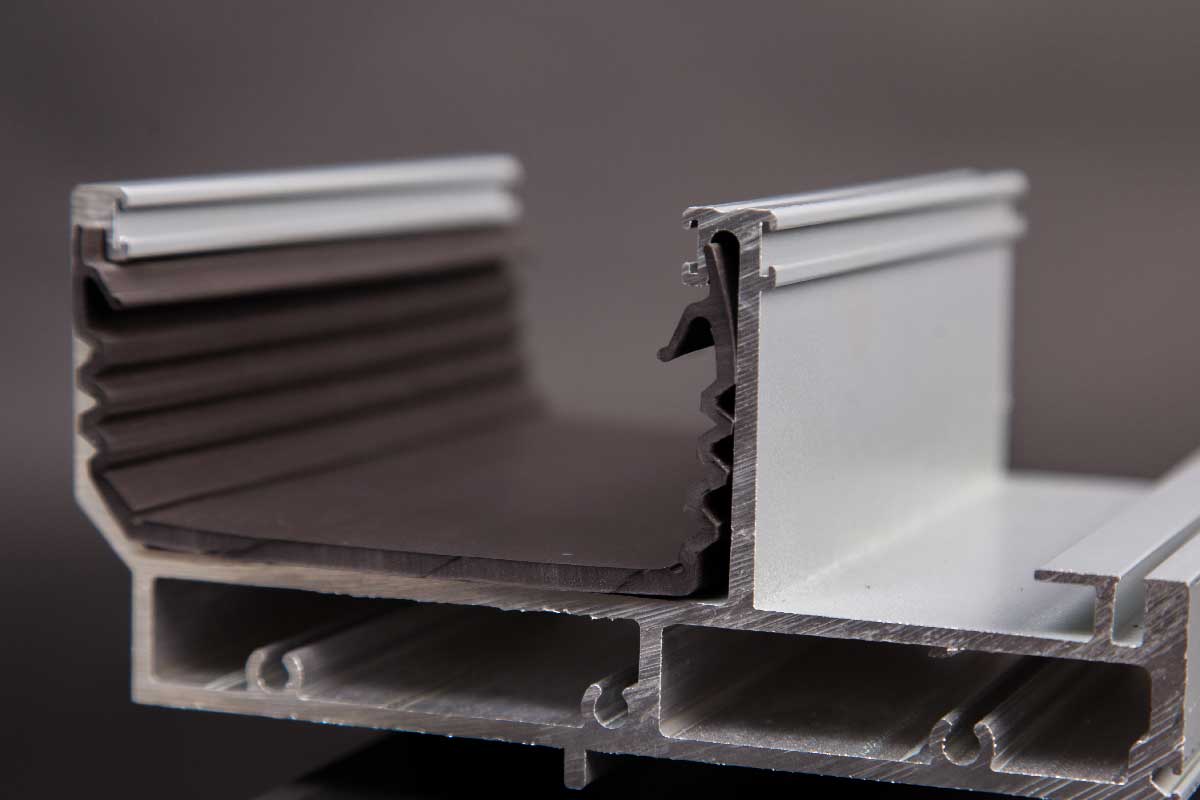Rubber beading profiles are available in a wide variety of shapes and sizes, each offering distinct applications and benefits. While sealing is one of the most common uses for rubber beading extrusions, they are also effective for noise cancellation, impact absorption, vibration control, and decorative trim on windows.
As a leading provider of rubber extrusion services, Qualiform specializes in custom manufacturing a comprehensive range of extruded rubber beading profiles. Leveraging our expertise and high-precision molding equipment, we can develop the perfect rubber beading profiles to meet the unique specifications of your industry.
Types of Rubber Beading Profiles
B Profile Extrusions
A B profile rubber extrusion is often manufactured with neoprene rubber and is able to offer the resistances necessary to perform in a wide variety of harsh environments. Neoprene B profile rubber extrusions also have exceptionally high impact absorption properties, making them ideal rubber beading profiles for high-stakes industrial environments. For example, many naval vessels use B profile marine rubber seals for marine fendering and leak prevention because of their protection against the force of the ocean.
D Profile Rubber Beading Profiles
Rubber D rubber extrusions are popular components that come in a wide range of shapes and sizes and can be produced with any of our available rubber compounds. For example, D profile EPDM rubber offers both weathering and ozone resistance on all rubber beading profiles, allowing it to perform both indoors and outdoors and in harsh weather conditions. Natural rubber D profile extrusions, however, are designed for superior friction resistance and high tensile strength. Regardless of the rubber compound, rubber D profile rubber seals have useful sealing and impact absorption properties.
E Profile Rubber Seals
E profile rubber extrusions are most often used as both door and window seals. The unique design of an E profile rubber seal or extrusion allows them to latch onto window and door panels without any adhesives or fasteners. This makes installation and removal of these specific rubber beading profiles easy as ever. Qualiform is proud of its ability to custom design E profile extrusions with a variety of in-demand rubber compounds, offering superior performance for your project needs.
Rubber L Profile Extrusion
Rubber L profile extrusions offer both sealing and protective properties in many different environments. A common benefit of L shaped rubber strip profile extrusions is anti-slip properties for better protection. When paired with EPDM rubber mats, these rubber beading profiles can prevent the mat from moving, regardless of how much foot traffic they take on. These profiles also provide impact resistance, making them a viable choice for protecting glass and sheet metal.
Our L profile extrusions are most often manufactured with EPDM or neoprene rubber. However, we can adapt our rubber molding process for unique compounds and dimensional requirements when necessary.
P Rubber Beading Profiles
credibly versatile and are a popular sealing solution for numerous applications. You may see P profile extrusions referred to as P seals, rubber beading profiles, tadpole seals, piping extrusions, and P profile rubber draught seals. P profile extrusions often come in EPDM, silicone, or thermoplastic elastomers (TPE). Depending on your application, Qualiform can custom manufacture either solid or hollow P profile seals with the ideal compounds and dimensions.
T Shaped Rubber Beaded Profiles
These rubber extruded profiles are characterized by their T-shaped cross section. T profile rubber seals function as gaskets that provide both sealing and insulation. Rubber T profile extrusions are useful in industries ranging from agriculture to aerospace and can be molded with a full selection of elastomers depending on the specific application environment.
U Profile Rubber Strips
U profile extrusions are also known as U rubber profile edging, U rubber trim profiles, and U profile rubber seals. Usually designed with EPDM, neoprene, and TPE, rubber U channel profiles are often used for edge trim and protection. Their superior flexibility and tear resistance allow them to protect glass and sheet metal panels from drops and other impacts. They also prevent any injuries that could occur due to sharp edges.
Another advantage of rubber U channel profiles is easy installation. You can easily slide this particular rubber beading profile over whatever edge you are protecting without any adhesives. These profiles are incredibly easy to apply and reuse for multiple projects.
Custom Rubber U Channel
Qualiform can create a completely custom rubber u channel based on your facility’s unique specifications. Our approach to sealing and securing the best rubber beaded profile edging always starts with listening to our customer’s specific needs to create the right size, fit and practical applications when designing custom rubber strips and other products.
Picking the Best Rubber Beading Profiles for The Job
Choosing the best custom extruded rubber beading profiles for your project requires careful consideration of many factors. Most importantly, you need to pick the right rubber material that will perform optimally in your work environment. However, selecting the best compounds depends on many variables.
For example, you may be considering synthetic rubber for your rubber gasket extrusions. Synthetic rubber is a flexible material offering wear, abrasion, and water resistance with the ability to handle the most extreme temperatures. It is also affordable, with prices much lower than natural rubber. However, if your application involves exposure to acids, oils, greases, fats, or ozone, it can deteriorate and decrease the quality of performance.
As a leading rubber beaded profiles manufacturer, Qualiform carries a diverse selection of rubber compounds. So, we can create custom rubber extrusions for virtually any project. Our rubber compounds include:
- Butyl Rubber
- EPDM Rubber
- Natural Rubber
- Neoprene Rubber
- Nitrile Rubber
- Rigid & Flexible
- Synthetic Rubber
- Thermoplastic Elastomers (TPE)
- Viton Rubber
If you are unsure of what rubber beaded profile or rubber compound you need, contact Qualiform today. Our technical staff is here to answer any questions you have and provide expert recommendations depending on your specific industry and the needs of your facility.

Applications
Glazing Rubber Seals We Produce
Benefits of Qualiform for Custom Rubber Beading Profiles
There are many reasons to choose Qualiform for custom rubber beading profiles. First, customizing your rubber parts offers great freedom of design. You can request parts in nearly shape and size, and a reputable rubber extrusion company can use nearly any type of rubber material. This gives you unlimited choices when it comes to the qualities your rubber parts will exude.
Another great benefit of Qualiform extruded rubber profiles is that we make parts that are both strong and flexible and soft, for long-lasting performance on the job. Our custom rubber beading profiles can be formed exactly to your specifications, including size, material, and applications needed.
Materials Used in Rubber Beading Profiles
To create 100% custom extruded rubber beading profiles, rubber extrusion companies think about a number of design factors related to the application. One of the first considerations is material. Rubber material choice depends entirely on how it will match the application requirements of the specific rubber parts. Once we have a material selected, our technical experts plan out the shape of the die. They may also consult their standard rubber die list, but they make new dies for a custom extrusion.
Based on the required properties and application required, the professional rubber molding suppliers at Qualiform can advise on the best material for the unique extruded rubber beading profiles. Additional consideration will be given to any secondary processes that are required. Custom compounds and fiber integration can be used when needed.
Natural Rubber
Natural rubber provides excellent acid, chemical, and abrasion resistance.
Silicone Rubber
Silicone rubber is an FDA-certified elastomer that maintains its form and properties when exposed to both high and low temperatures.
Viton
Viton provides superior heat, chemical and weathering resistance.
Nitrile
Nitrile, aka nitrile rubber, NBR (nitrile butadiene rubber), acrylonitrile butadiene rubber, Perbunan or Buna-Nis, is highly resistant to oils and ideal for O-rings, hoses or hydraulic seals.
Neoprene
Neoprene has high tensile strength and resists heat, fire, UV rays, water and oil.
Butyl
Butyl delivers low air flow permeability.
SBR
SBR (styrene-butadiene rubber) is used in applications that require high abrasion resistance.
EPDM
EPDM (ethylene propylene diene terpolymer) is ideal for applications that involve heat, aging, ozone, oxidation and ultraviolet rays. Can be used for sponge rubber, foam rubber, weather-stripping, tarp straps, door gaskets, window gaskets and roofing membrane.








